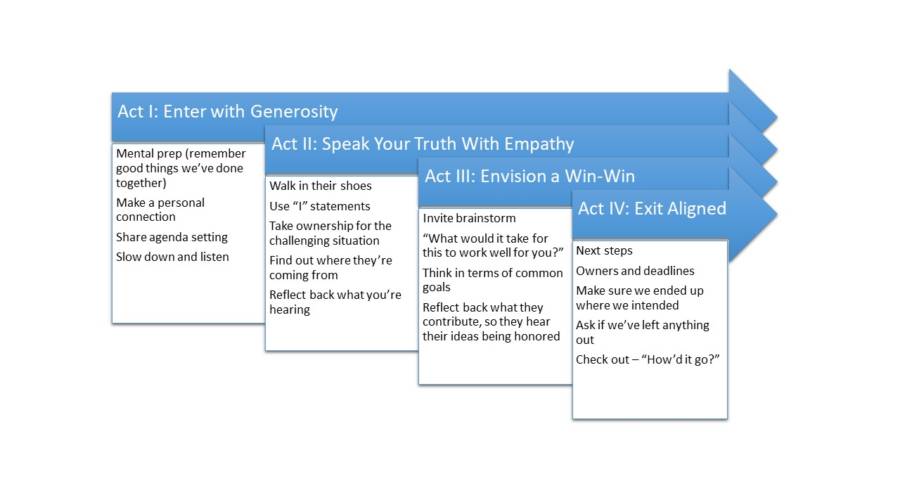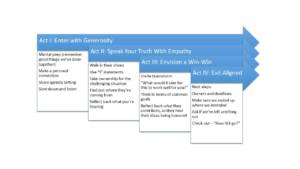Virtual Conflict: Your Focus Determines Your Outcome

Qui-Gon believed this: living in the moment was the best way for him to embrace the Force, which often put him at odds with the other more conservative Jedi. This is not unlike our own reluctance to be at odds with our conservative inner instinct to avoid a challenging conversation.
I am not a Star Wars fan, but I do remember watching the 1999 film The Phantom Menace and was recently reminded of a quote by Liam Neeson’s character, Qui-Gon Jinn: “Your focus determines your reality.”
I also read a recent article by the Harvard Business Review: Resolve a Fight with a Remote Colleague.
And I am about 17% of the way through a book By Sherry Turkle on Reclaiming Conversation: The Power of Talk in a Digital Age.
All three of these references point to one thing: resolving conflict in the virtual world, when we have only a webcam connection at best — or a phone line at worst — is difficult, often avoided, or postponed until it is too late and permanent damage is done.
Fortunately, it doesn’t need to be so difficult or scary if we are thoughtful and intentional (i.e. “focused”) in working towards a jointly successful outcome (i.e. “reality”).
“There is always hope, my friend, though it often comes in forms not looked for. The key is knowing how to see it and seizing the opportunity.” – Qui-Gon to Yoda
In the HBR article from November 2015, Amy Gallo clearly sets out the challenges of virtual conversations:
- no body language or facial expression cues
- lack of “shared identity” (i.e. experiences shared in common)
- a focus only on role — the work and work content — rather than an empathetic interaction between two human beings.
No wonder that we often resort to emails when we should pick up the phone or connect with a webcam. It’s just too hard!
Sherry Turkle sees the same problem happening on a macro-level with our dependency (dare I say “addiction”) to written texts, IM, Emails and chat.
“We are being silenced by our technologies – in a way, ‘cured of talking’.” And yet, “It is when we see each other’s faces and hear each other’s voices that we become most human to each other.”
At The Ariel Group, we believe being “human to each other” is at the heart of any challenging conversation that has a successful outcome. It begins by being willing to be present to the other person and in the moment.
Qui-Gon believed this: living in the moment was the best way for him to embrace the Force, which often put him at odds with the other more conservative Jedi. This is not unlike our own reluctance to be at odds with our conservative inner instinct to avoid a challenging conversation.
As a result, we have a model that I believe Qui-Gon, Amy, and Sherry would all approve of as we integrate many The Ariel Group’s concepts of Presence into a challenging conversation, even in virtual situations: Reaching out in Four Acts (or ROIFA, for short).

Having introduced this model to hundreds of people in our courses on Virtual Presence and Leadership Presence, the secrets to the use of this model (and also sometimes the most difficult to implement), are the following:
- Act I: Being present (and I mean really present – to “channel the Force”, as Qui-Gon would say) – the ability to focus only on the other person and nothing else for the duration of the conversation.
- Act II: Listening and reflecting back what you are hearing – demonstrate that she or he has been heard.
- Act III: Empathy – the ability to walk in the other person’s moccasins and involve him or her in the process.
- Act IV: Courage – to speak your truth and ask for feedback at the end.
Resolving conflict virtually is never easy, and for sure, it is easier when we are in the same office or we can meet face-to-face. But it is possible if you prepare for and approach the conversation thoughtfully and with focus.
May the Force be with you!

